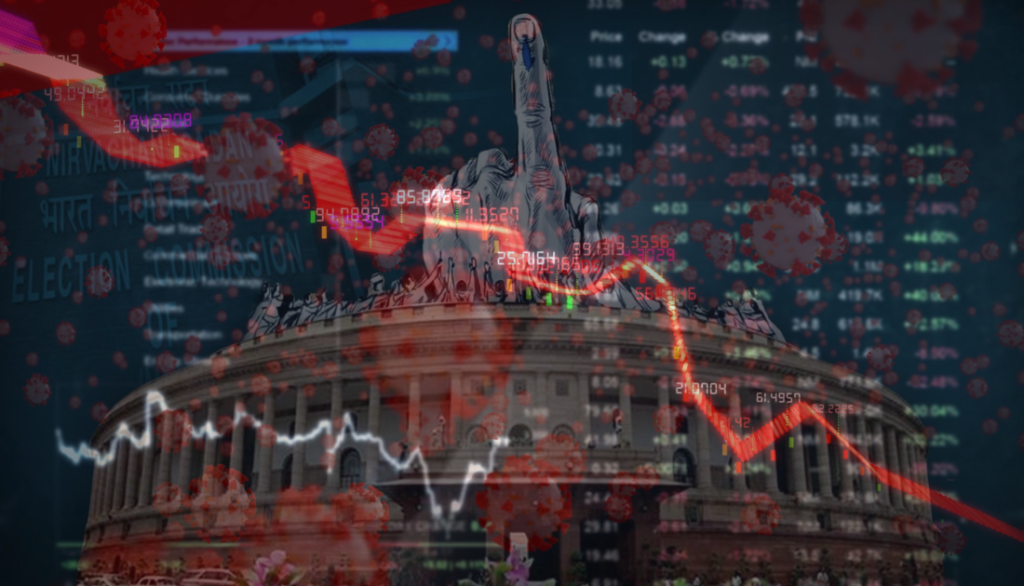The initial reaction to the recent general election results in India was marked by a significant downturn in the financial markets. On June 4, the Nifty index saw a sharp decline of 5.9%. This drop was largely anticipated by analysts due to the BJP’s unexpected failure to secure the 272 seats necessary to form a government on its own. The market’s initial response reflected the uncertainty and concern among investors about the potential instability of a coalition government.
Jefferies (a prominent brokerage house) has pointed out that the lack of a clear majority for the BJP is a concerning development. Coalition governments are often seen as less stable and more prone to policy inconsistency, which contrasts sharply with the single-minded policy focus witnessed during Prime Minister Narendra Modi’s first two terms. This shift raises questions about whether Modi can maintain the same level of effectiveness in a coalition setup.
Looking ahead, Jefferies warns of a renewed risk of market corrections, particularly in the mid-cap sector. The Nifty MidCap 100 index currently trades at a forward earnings multiple of 32.2x, compared to 20.6x for the Nifty, indicating a potential overvaluation in the mid-cap space. This disparity suggests that mid-cap stocks may be more vulnerable to price adjustments in the near future.
Investor sentiment appears to be shifting in response to the election results. Jefferies anticipates that there will be a temptation for investors to tilt their portfolios more towards consumption-focused stocks, rather than investment-heavy sectors. This shift is based on the expectation that the new government may prioritize populist measures over infrastructure spending, which has been a hallmark of the past decade under Modi’s leadership.
The upcoming budget, set to be announced during the Parliament’s Monsoon Session, will provide more clarity on this front. Reports suggest that the coalition government is considering substantial consumption-boosting measures, including tax cuts for lower-income individuals, amounting to more than ₹50,000 crore (US$6 billion).
Jefferies also believes that tactically adjusting portfolios in favor of consumption plays, especially those targeting rural areas, makes strategic sense. Despite this tactical adjustment, the base case remains that India is in a property and capital spending upcycle.
Drawing historical parallels, Jefferies’ head of India Research, Mahesh Nandurkar, noted that the BJP’s shock defeat in 2004 led to an initial market decline but was followed by a significant recovery driven by a strengthening capex cycle.
If a similar pattern unfolds, the recent election outcome might reduce the likelihood of state-owned enterprise reforms and public sector divestments, which investors had hoped would be prioritized in a third uninterrupted term of BJP governance.
In terms of fund flows, the stock market had been buoyed in the months leading up to the election by robust retail investor inflows. Jefferies estimates that domestic retail inflows into Indian equities, including mutual fund inflows and direct retail trading, reached an impressive US$7 billion per month in the first five months of the year. Domestic equity mutual funds’ net inflows have more than doubled from ₹15,600 crore (US$1.9 billion) per month in 2023 to ₹30,300 crore (US$3.6 billion) per month in the first five months of 2024.
While there is a risk of renewed share price declines, Jefferies notes a potential positive from a flow of funds perspective. Foreign investors, who were net sellers of Indian stocks last quarter, may view any significant market correction as a buying opportunity. This perspective is supported by the fact that foreign investors have been net buyers since early June, adding US$4.95 billion to their holdings.
From a macroeconomic standpoint, Jefferies forecasts annualized earnings growth of 16% for the FY 24-26 period. Despite a slight decline in net interest margins within the banking sector, overall loan growth remains healthy.
The sector faces regulatory pressure from the Reserve Bank of India to manage loan-to-deposit ratios and slow loan growth in the retail segment, particularly for unsecured loans. This regulatory environment poses a near-term challenge for private-sector banks, which have underperformed relative to the broader market in recent quarters.

